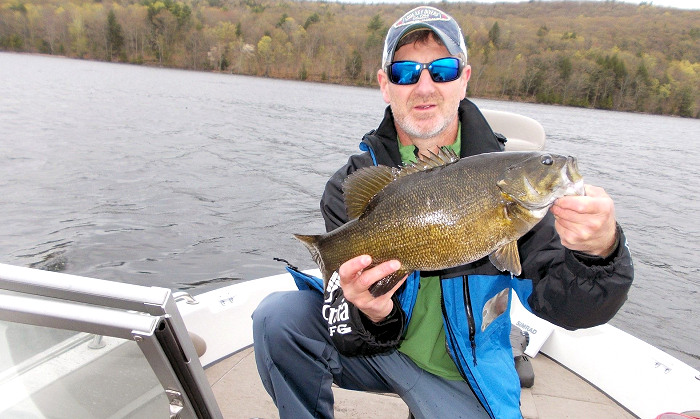The Backcountry Press
The country's premier daily HUNTING, FISHING & OUTDOOR news in the USA and around the globe. Read whats happening in your neck of the woods & beyond.
The Backcountry Outdoor News reports the latest hunting and, fishing news along with fishing derbies and tournaments
from:
| ||||||
| ||||||
|
HUNTING NEWS CATEGORIES
© 2010 Backcountry Press Outdoor News - All Rights Reserved Website Design by:
Connect With Us
 | ||||
Disclaimer: The views expressed on this site are that of the authors and not necessarily that of TBC Press
 | ||||
For catch-and-release bass fishing, all bass must be immediately released after being caught and only artificial lures may be used. The use of live bait is also prohibited during the catch-and-release season.
“When thinking about early season bass fishing, many uninitiated anglers picture targeting bedding bass, but that’s just not the case. Pre-spawn bass fishing is about targeting bass on a catch-and-release basis as they stage and concentrate around areas close to where they plan on spawning. When water temperatures reach 48°F to 56°F, bass move to the shallows, begin warming their bodies, and feed heavily for a couple weeks in preparation of spawning activities. Once bass have begun constructing nests, and guarding and protecting eggs and newly hatched fry, they don’t actively feed. Quite honestly, it’s time consuming and often frustrating to target non-feeding bass on beds. It’s the pre-spawn groups of bass that are aggressive, grouped up, and a ton of fun to catch.”
Vermont Fish and Wildlife has assembled a few basic tips for anglers heading out to fish for bass during the spring catch-and-release season.
- Let water temperatures dictate your tactics and lure choices. Often fishing slowly on the bottom with jig-style baits can be most effective shortly after ice-out. As water temperatures begin to rise into the 48 to 58-degree range and fish feeding activity increases, moving baits such as spinnerbaits, crankbaits and stickbaits can be big producers.
- Look for rocky shorelines and marshy back bays. Shallow, gradual rocky shorelines consisting of ledge, chunk rock, gravel or boulders will hold heat and warm up first, attracting baitfish and ultimately feeding smallmouth and largemouth bass. Marshy, weedy bays will also warm up quickly and will attract numbers of largemouth bass in various stages of their springtime movements.
- Pay attention to the clues. If you catch a fish, get a bite, or see a fish follow your lure, take another pass through the same area. Many fish will often stack up on the same structure during the spring as they transition from winter to spring and summer haunts.
Anglers can read about current fishing regulations in the 2020 VERMONT FISHING GUIDE & REGULATIONS available free from Vermont license agents. To purchase a fishing license or learn more about fishing in Vermont, visit www.vtfishandwildlife.com.
Stock Image
####
COVID-19
As OUR COUNTRY SLOWLY STARTS to REOPEN AGAIN (from the COVID-19 pandemic) and continue to enjoy outdoor activitie, ALL outdoorsmen (man, woman, child) should follow the guidelines set by nps.gov. These guidelines include; social distancing, the Leave No Trace principles, including pack-in and pack-out, to keep outdoor spaces safe and healthy.
Vermont’s catch-and-release bass fishing is underway with some of the hottest bass fishing action in New England happening right now.
“Spring catch-and-release bass fishing is a really special time to be on the water in Vermont, and the fishing can be truly spectacular,” said Bernie Pientka, state fisheries biologist with Vermont Fish and Wildlife. “Combine warming weather, minimal boat traffic and feeding largemouth and smallmouth bass, and spring bass fishing is hard to beat.”
Vermont’s catch-and-release bass fishing runs until June 13, when the regular bass season opens, and the harvesting of bass is allowed.
Vermont 2020 Catch-and-Release Bass Fishing Open - Regular Bass Season Opens June 13
Submitted by: TBC Press
Posted on: 05/07/20
News # 13528














